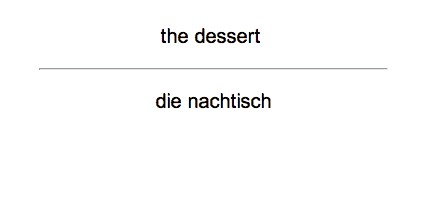Duolingo is a popular language learning app, but can it really teach you German? This article explores a year-long experiment using Duolingo and other resources to learn German, sharing the results and key takeaways.
The goal was to acquire enough German skills in a year to navigate basic conversations, read menus, and ask for directions. The initial strategy involved dedicating 20 minutes daily to Duolingo.
The Duolingo Journey and Beyond
For the first two months, Duolingo proved engaging, utilizing flashcards, tests, and a social element that fostered friendly competition. However, after three months, watching the German film “Good Bye Lenin!” revealed a significant gap – a lack of practical application. This prompted the incorporation of supplementary learning methods.
Ten one-hour sessions with a tutor on Live Lingua aimed to enhance listening comprehension. A trip to Japan in the fifth month highlighted the challenges of context switching between languages. By month six, the limitations of Duolingo’s vocabulary became apparent, leading to the adoption of Anki, a flashcard app, for personalized vocabulary expansion.
Month seven brought the realization that pronunciation had been neglected. YouTube videos on German pronunciation and the book “Fluent Forever” helped address this issue. Completing all Duolingo lessons in month eight, despite being declared 48% fluent by the app, still left a significant comprehension gap when watching German films. Reviewing Duolingo lessons and adding unknown words to Anki became the new focus.
Seeking variety in month nine, 10 minutes of Duolingo were replaced with Yabla, a platform offering English subtitled German YouTube videos.
Results After a Year of Learning German
Returning to Berlin in the eleventh month yielded mixed results. While understanding signs and advertisements improved significantly, conversations with native speakers remained challenging due to speed and the tendency to switch to English. An online test with Kapital Zwei placed the language proficiency at A.2.2, equivalent to level 2.5 out of 8 – a decent achievement for primarily self-taught learning. To maintain momentum, two weeks were spent at a German language school in Berlin, where following the instructor’s pace proved surprisingly manageable.
Lessons Learned and Recommendations
Several key takeaways emerged from this experience:
- Specific Goals are Crucial: Learning German without a concrete objective lacks motivation. Setting sub-goals can help maintain progress.
- Diversify Learning Resources: Relying solely on one resource is insufficient. Combining Duolingo with other tools like Anki, in-person classes, and immersive experiences like watching German films or shows is essential.
- Sentence Practice over Vocabulary: Memorizing vocabulary words in isolation is not enough. Practicing sentence construction and conjugation is crucial for effective communication.
Knowing the Common European Framework of Reference for Languages (CEFR) provides a benchmark for progress. Consistent, immersive learning over a longer period is likely necessary to achieve higher fluency levels.
Long-Term Language Learning Strategies
Beyond the initial year, the learning journey continued. Key strategies included:
- Mastering Noun Genders: Learning the gender (der, die, das) associated with each noun is fundamental for German grammar and sentence construction. Using Anki flashcards to memorize the 2000 most frequent German nouns, including their genders, is highly recommended.
- Prioritizing Vocabulary: Expanding vocabulary is crucial for progressing to higher proficiency levels. Consistent vocabulary building, along with regular practice using new words in sentences, is essential.
- Utilizing Language Learning Apps and Tutors: Continuing to leverage resources like RypeApp for personalized tutoring and engaging with authentic German content, such as the YouTube sitcom “Nico’s Weg,” provides valuable practice and reinforcement.
In conclusion, while Duolingo can be a helpful starting point, achieving fluency in German requires a multifaceted approach. Combining various resources, setting clear goals, and prioritizing consistent practice are key to success.


